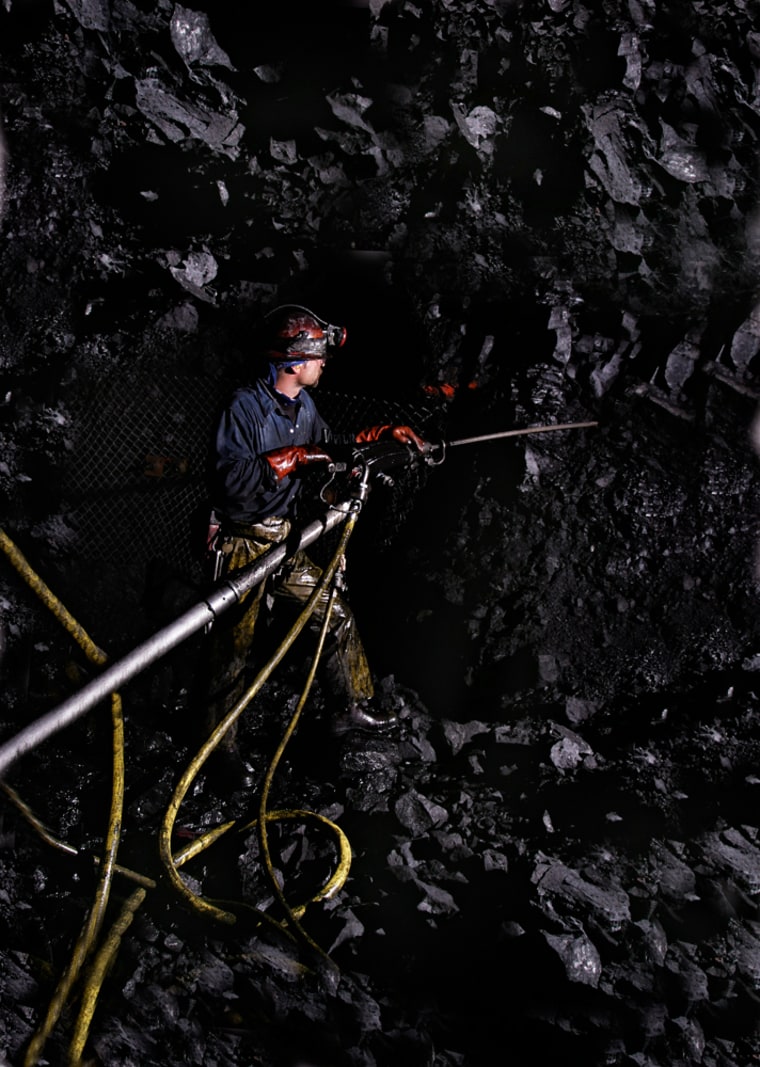From offices in a downtown skyscraper overlooking the snowcapped Rockies, Newmont Mining Corp. is intensifying a global hunt for the next mother lode of gold.
Spurred by rising prices, Newmont opened one gold mine in Nevada in December and plans to open two more — one in Nevada and another in Ghana — this year. Another in Ghana is on tap for 2007.
Other corporate prospectors are taking similar steps, dusting off back-burner projects and pouring more money into exploration around the world. They are moves that environmentalists decry as a threat to pristine habitat, air and water.
“This isn’t just a conservationist issue; this is a human health issue,” said Julie Wedge of Nevada’s Great Basin Mine Watch environmental group.
Mining companies pulled back on production and exploration when gold prices faltered and sank to a 20-year low in the late 1990s after central banks determined they no longer needed to keep large gold stockpiles. By 2000, production had flattened out and then declined.
Gold prices, meanwhile, have climbed back into the mid-$500 range, recently hitting the highest level since 1981. “We think it’s going to be a good period for some number of years,” Newmont Chief Executive Wayne Murdy said.
Production is expected to be flat to slightly up in the next few years as companies complete regulatory and permit processes before starting operations, analysts and industry officials say.
“Many of these projects, which were discovered in the mid-’90s or even earlier, were put on the shelf when prices drifted below $350. But these are the kind of projects that are coming back on stream,” said Bruce Alway, a senior analyst with London-based GFMG, a precious metals consulting organization.
“It also means people are going to be spending money on projects that were more advanced or they’re going to fast-track stuff that they’ve got on the books,” he said.
Companies also are putting more money into exploration, a key to the industry’s future. From 2002 to 2005, exploration budgets for 95 percent of the world’s gold mining companies nearly tripled, from $784 million to $2.3 billion, according to Metals Economics Group of Halifax, Nova Scotia, which researches and analyzes the global mining industry.
“I think that, based on the lack of exploration that we’ve seen in the last few years, that we will see high gold exploration at least being maintained for a few years,” said Jason Goulden, the group’s director of corporate exploration strategies.
Companies are focusing more on untapped areas of Asia, South America, Russia and Australia. “The shift has been toward the former Soviet Union to Asian countries,” Goulden said. “We’re seeing a lot in China now that we didn’t see in the past cycle.
“These are sort of the new frontiers so to speak. Western companies have not traditionally been in these zones,” Goulden said.
The move is worrisome to environmental groups, which call mining one of the top risks to the ecosystem. “It’s a huge concern. If you are downstream from a mine and you rely on that water for your drinking water, you have cause for concern,” said Alan Septoff, research director for the environmental group Earthworks.
An emerging issue in the western United States is mercury pollution. Nevada, for example, is drafting rules that would govern mercury emissions from gold mines. Both industry and environmentalists have offered input.
Wedge, Great Basin’s executive director, said elevated levels of mercury have been reported in Nevada’s rural counties, and in parts of Idaho and western Utah.
“We all understand that mining is a business and that it’s going to exist and that there is a certain place for that,” she said. “While I can appreciate that people want to make sure they have cheap jewelry, it has a major impact on the citizens in our rural areas of Nevada.”
Toronto-based Barrick Gold Corp. has spent about $100 million a year for the past several years on exploration, but spokesman Vince Borg said the amount is not tied to fluctuations in the gold price.
Barrick opened three mines last year — in Peru, Argentina and Tanzania — and plans to open a fourth this year in Australia. Barrick is working to get regulatory approval for its acquisition of Vancouver-based Placer Dome Inc., a $10.4 billion cash-and-stock deal that would create the world’s largest gold producer.
Newmont opened a $220 million underground mine in northeastern Nevada last year and is working to open a $236 million open-pit operation in north-central Nevada in the first quarter. An open pit mine ranging from $410 million to $435 million in cost is expected to open in the second half of the year in western Ghana.
Exploratory studies in Ghana have been so promising that Murdy says the region likely will become a core operation for the company. “We see real tremendous growth opportunity there,” he said.
Newmont continues to battle criminal charges of environmental pollution at a mine on Sulawesi Island in Indonesia after the government dropped a civil lawsuit with similar allegations.
Newmont began operations in Sulawesi in 1996. It stopped mining two years ago but continued processing ore until Aug. 31, 2004, when the mine closed.
The Indonesian government alleged last year that pollution from Newmont’s mine caused health problems for villagers living near Buyat Bay. It also said the mining giant violated environmental laws by dumping millions of tons of pollutants into the bay.
Murdy insists the company did nothing wrong.
“We’re highly, highly, absolutely confident of what happened there. We think all the scientific evidence is overwhelming, and we’ll slowly get our day in court to be able to prove that,” he said.
Newmont is working with the University of Colorado in a multiyear collaboration on health studies in the communities around mines in Ghana and Peru.
“I think we do a lot of good things around all our mines but we’ve never really been that systematic about it. And this is a much more systematic approach,” Murdy said.
